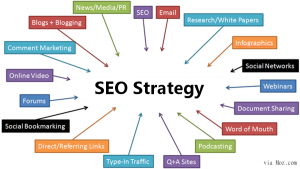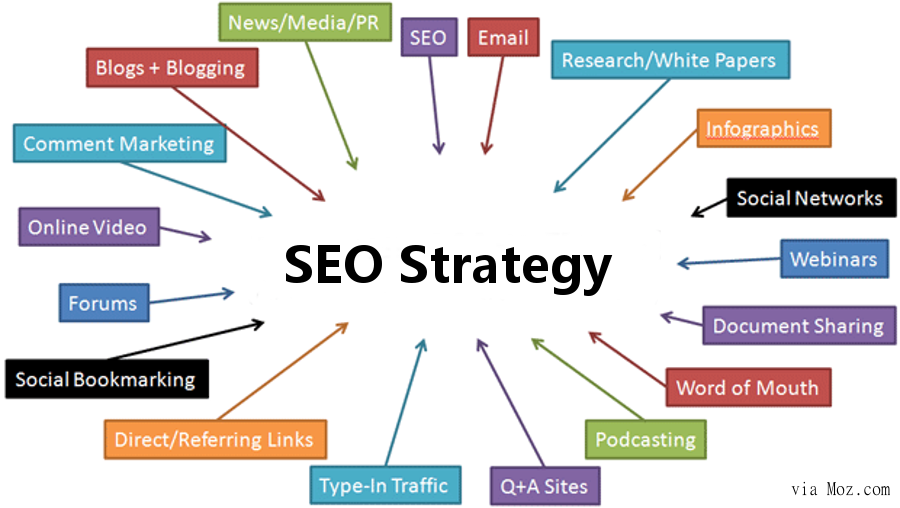If you want to create an SEO strategy that will help you rank in Google in 2022, there are a few things you need to do.
First, you need to make sure your website is optimized for mobile devices. Google now ranks websites based on how well they perform on mobile devices, so if your website isn’t optimized, you’re already at a disadvantage.
Next, you need to create content that is keyword-rich and informative. Google wants to see that you’re creating content that is relevant to what people are searching for, so make sure your content includes the keywords you want to rank for. In addition, your content should be informative and help answer the questions people are searching for.
Finally, you need to build links to your website. Google uses links as a way to determine how relevant and trustworthy your website is, so the more links you have to point to your website, the better.
If you follow these steps, you’ll be well on your way to ranking in Google in 2022.

What is SEO strategy?
SEO Strategy
SEO strategy is a comprehensive plan to improve a website’s search engine rankings and organic traffic. It encompasses several key pillars, including technical SEO, content strategy, on-page SEO, link building, and user experience. By focusing on these key areas, you can develop a well-rounded SEO strategy that will help your website rank higher in search engine results pages and attract more organic traffic.
SEO strategy is all about giving your audience the best possible search experience.
Benefits of a successful SEO strategy include increased brand awareness and trust with consumers, as your company becomes a familiar resource at every stage of the customer journey.

Your SEO Strategy Matters

The Problem with SEO Strategy Checklists
How to create an SEO strategy
Before we dive into an SEO strategy template, let’s look at the key principles you need to consider while creating an organic search strategy. Whether you’re a beginner or an SEO expert, it’s crucial to get these fundamentals right.
1. Set SEO goals
2. Consider SEO scalability
3. Execute a competitive analysis
4. Keyword research and Build Content
5. Align content with search intent
6. Build SEO strategy into the conversion funnel
7. Technical SEO strategy
8. Content SEO strategy
9. On-page SEO
10. Off-page link building strategy
11. Video SEO strategy
12. Local SEO strategy
13. Branding, SEO and Reputation
14. User Exprience and SEO
15. SEO and marketing strategy development
16. Track SEO metrics and KPIs

1. Set SEO goals
It’s vitally important that you set some goals before you start any large-scale SEO project. If you don’t have clear goals, it’ll be impossible to measure the ROI of your SEO activities. Also, make sure to tie your SEO outcomes to high-level metrics such as revenue.
Begin by figuring out what your target marketing results are, and then use that to inform your process goals.
- Do you want to increase e-commerce sales? For which business units, products, and services?
- Are you trying to grow market share within specific audience segments? Which segments and how will you measure your reach?
- Do you want to get more website traffic? How much traffic? How will you value inbound traffic to one page versus others?
- Are you looking to drive conversions through demand generation marketing or lead generation? How will you measure conversions and micro-conversions? How many do you need to see, and by when?
2. Consider SEO Scalability
Enterprise companies often face the challenge of scalability when trying to develop an effective SEO website strategy. In-house SEO teams are often very smart and efficient, but they may not have the time or resources to take on large-scale projects. Digital Worms SEO technology solutions can help with this by determining market share opportunities, streamlining keyword research, and managing blogger outreach. This way, you can be sure that your SEO program is truly scalable.
Integration and standardization are key to scaling your SEO business strategy. To that end, spearhead cross-departmental collaboration with web development, brand management, product management, and sales. Eliminate silos and institute documented processes and systems so you know what’s happening, and who’s responsible.
At a large company, keeping executives and other departments informed of progress toward stated goals is critical. Dashboards allow you to scale your SEO reporting to as many people as needed to be kept informed. It’s easy to pull data from tools such as Google Analytics, Google Search Console, SEMRush, or Ahrefs, etc.
3. Execute a Competitive Analysis
Competitive analysis is the process of examining other businesses in your industry in order to improve your own strategy. You’ll want to look at things like their organic search rankings, online reviews, blog strategy, and backlink profiles. Once you have a good understanding of these basics, you can start to dig into their user experience, social media presence, target audience segments, USPs and differentiators. If you really want to go above and beyond, you could even do a technical SEO audit. This would involve taking a closer look at their site health, technical SEO implementation, page speed and mobile friendliness.
While your main competitors should definitely be included in your competitive analysis, you should also take into account your online competitors – those who occupy Google page one for your target SEO keywords. This is important because you need to outrank not just your business competitors, but also your online competitors, in order to attract the most search traffic.
For example, an industry publication may be a threat for your search engine results page (SERP) rankings. So while they might not be a direct competitor, they are still a competitor nonetheless and should be taken into consideration.
The dual focus on both business and online competitors is necessary in order to create and maintain a successful SEO strategy that will attract traffic and conversions.
4. Keyword Research and Build Content
Any great SEO strategy starts with thorough keyword research. It may seem like a no-brainer, but it’s essential to create content and web pages that your audience is actually searching for. All too often, big brands tend to overproduce content that doesn’t target specific keyword phrases, or that targets the same term over and over again.
Beyond proprietary technology, here’s a complete list of tools and processes you can use to find the most impactful search terms.
- Use comprehensive SEO tools like Ahrefs, Moz and SEMRush for mountains of keyword-related data.
- Make use of dedicated keyword research tools like KWFinder, KeywordTool.io and Soovle.
- Use a keyword difficulty tool to understand how easy or hard it will be to rank for each keyword.
- Remember to explore not only head terms but long-tail keywords as well.
- Check Google Search Console to see which keywords already drive organic traffic, and identify opportunities for optimization.
- Review Google page one and two to confirm search intent.
- Review Google Search Trends to spot rising trends and seasonality.
- Reference Google’s autocomplete and “people also ask” features to reveal related keyword ideas.
- Try an SEO tool like Answer The Public to explore queries like “why” and “how” phrases.
- Use BuzzSumo “Questions” to uncover related questions from millions of forum posts, Amazon, Quora, and other websites.
- And don’t forget to tap into your company’s deep reservoir of customer feedback. This may include information from surveys, reviews, live chat, chatbots, social media, blog comments, sales calls, customer support calls, digitalwormsmag, etc.
5. Align Content with Search Intent
When you’re conducting keyword research, search intent is one of the most important factors to consider. That’s because it effectively communicates Google’s overarching search objective, which is to provide users with the most relevant content as quickly as possible.
A keyword may have a high search volume, but if it’s driven by user intent that doesn’t align with your content, business, products, or services, then ranking for it would be nearly impossible. Any traffic you do get would most likely bounce without converting.
So how can you decipher Google’s perception of search intent? Start by searching your keyword and analyzing the top 10-20 results.


